The MDE15 works, selected by the artists to be exhibited in the conventional showrooms, will be set in the rooms of the Museo de Antioquia and its Casa del Encuentro (Meeting House), and the Casa de la Música de EPM (EPM Music House) located in the Parque de los Deseos (Park of Wishes). The MDE15 will also include some fleeting works made in different public spaces of the city.
The artists invited by the MDE15 under these two categories, alphabetically listed:
 Camila Botero
Colombia
Camila Botero
Colombia
Economic, social, cultural and political conditions contribute to the development of a city and the way it looks. Over time, each place develops a visual language. The result is an urban landscape full of tracks that usually help us to find our place. ¿What are those signs and symbols? ¿What are our ideas of the cities we do not know? In some cases, monuments are the ones that help us understand where we are and give us information about the history of that place, but in the most ordinary places of the city, where there are no famous statues or…
Read more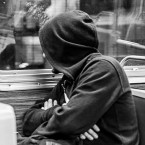 Camilo Cantor
Colombia
Camilo Cantor
Colombia
What are the differences between the lives of children in Oaxaca, Mexico and Medellín, Colombia? What can we learn if children from each country record sounds from their surroundings? Are the similarities in these surroundings? As we listen to the sounds that attract the attention of the children we not only perceive innocent explorations, but also the possibility that this innocence can be involuntarily affected by the recorded actions or activities. In the recorded acts and perceptions in Escuchas Paralelas the children give us other ways to consider our lives and the ways that we relate to our surroundings.
Read more Camilo Restrepo
Colombia
Camilo Restrepo
Colombia
Economic, social, cultural and political conditions contribute to the development of a city and the way it looks. Over time, each place develops a visual language. The result is an urban landscape full of tracks that usually help us to find our place. ¿What are those signs and symbols? ¿What are our ideas of the cities we do not know? In some cases, monuments are the ones that help us understand where we are and give us information about the history of that place, but in the most ordinary places of the city, where there are no famous statues or…
Read more Carlos Motta
Colombia
Carlos Motta
Colombia
The construction of the colonial subject in America made use of physical and epistemic violence against the other. This is the reason why it has been represented in the narratives of the conquerors or rulers according to the values of the cultural establishment. This ensemble of videos shows stories about unspeakable sins (abominable). Body, homoerotic desires and banned sexualities find here a representation of the nature and the intersection of historic times, a counterpoint to the values raised and defended by Catholic, white and heterosexual cultural regulations. Therefore, Motta’s work calls into question this representation of the subaltern subject who…
Read more Clara Ianni and Debora da Silva
Brasil
Clara Ianni and Debora da Silva
Brasil
Plea is a project realized in collaboration with Debora Maria da Silva, founding member of Movimento Maes de Maio – a social movement that unites mothers that lost their children in the massacres of the death squadrons of the military police during the military dictatorship in Brasil. The film is shot in the Cemiterio de Perus, on of the places used by the military junta to bury corpses in mass graves. Though the hegemonic narratives about Brazil might coincide with a festive imagery of progress, there is an urgent untold story that needs to be taken as object of reflection.…
Read more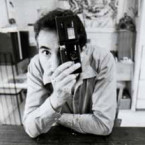 Claudio Perna
Venezuela
Claudio Perna
Venezuela
This artist is a pioneer of conceptualism in Venezuela. Pernia has experimented with collage, photographs -including those taken by others under his instructions-, videos, photocopies, especially copies of parts of his own body and photo reports of police incidents; infiltrations or strategies of inclusion of his works, drawing and performance. He applied a convergent contemporaneity where emotions, academic knowledge, pedagogy, media and popular culture –local or foreign, significant or common- joined together under a visionary conception of the cultural geography that allowed him to be closer to socio-environmental issues. He named Coincident those artists who, just as he did, negotiated…
Read more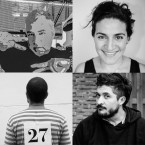 Colectivo NoMaNada
Colombia
Colectivo NoMaNada
Colombia
NoMaNaDa answers the call to review ethical aspects of urban transformation processes from a place mixing urban and rural areas on the borders of Medellin, a typical environment of Latin American cities. They talk about the “charcoal makers”, who have worked for generations to supply themselves and the upper area of the city. With their installation located at the Museum and not far from it, in a moment that seems from another time, NoMaNada provides more questions than answers: “Who are they, which rural areas do they come from? Is their job nomadic, are they settled in small farmsteads? Is…
Read moreSorry, this entry is only available in European Spanish.
Read more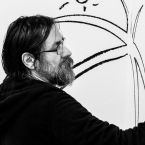 Dan Perjovschi
Romania
Dan Perjovschi
Romania
The sense of humor is useful to many artists who look for smart ways to communicate the results or intentions of their ways of building personal worldviews. The drawings on the walls of museums or in the city are a refreshing strategy that Dan Perjovschi has used to closely examine local and global issues for all audiences. He sometimes calls himself a reporter who turns data, collected in a specific time and place, into visual images. For him, drawings are the intellectual graffiti which lightens deeper issues. In his words, they are “almost cartoons, almost art- brut, but none of…
Read more Daniela Ortiz
Perú
Daniela Ortiz
Perú
Ortiz’s work focuses on spaces in tension. He brings into question exclusion processes while revealing colonial dynamics still present in many contemporary societies. In 97 empleadas domésticas (97 maids), the artist shows the invisibility of domestic staff using photographs taken from social networks of wealthy families in Peru. On the other hand, in Habitaciones de servicio (Room Service), she focuses her attention on the vital space allocated to the domestic worker using architectural plans of Lima houses from 1930 to 2012. Both works allow not only a sharp look at the persistence of discriminatory dynamics, but also at its radicalization…
Read more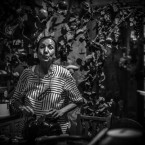 Elena Vargas Tisnés
Colombia
Elena Vargas Tisnés
Colombia
Memories, friends, trips, music and stories can be seen in the house of Elena and Orlando. Through this work, Elena Vargas Tisnés shows how an artistic practice is experienced. During the last 23 years, she has been building here a portrait of her passions in life. This house is not the work of a hidden hermit but a meeting place for the residents and peasants of Santa Elena, her students and friends. Elena shows her concerns and proudly invites us to immerse ourselves in them.
Read more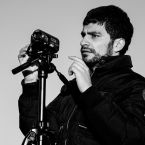 Élkin Calderón Guevara
Colombia
Élkin Calderón Guevara
Colombia
Descriptions of territories ripped from the conquered populations in America since the fifteenth century, as we know, were established from the point of view of the empire that imposed its rules. Due to this, the image of the subordinate (subject) was built mainly with fantastic and exotic performances. Despite these descriptions reproduced by the official history about land, communities and individuals, the conqueror never managed to control his entire new territory. Libertaria tropical (Tropical libertarian) comes out as a paradoxical image in the middle of a barely outlined landscape. It swaps the significant facts it uses to make way for…
Read more
